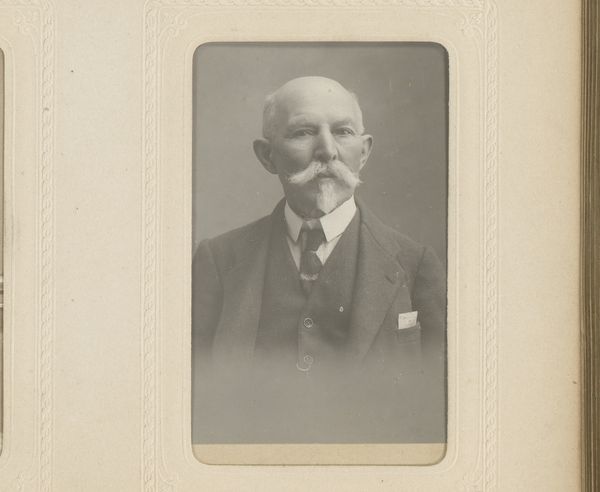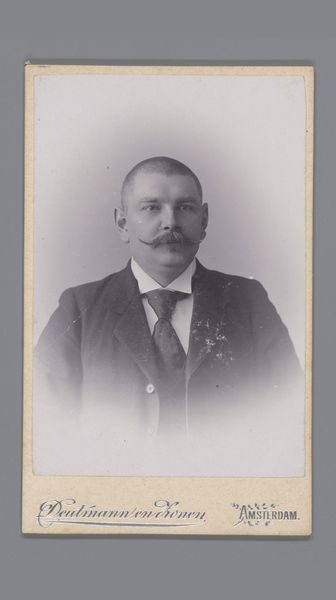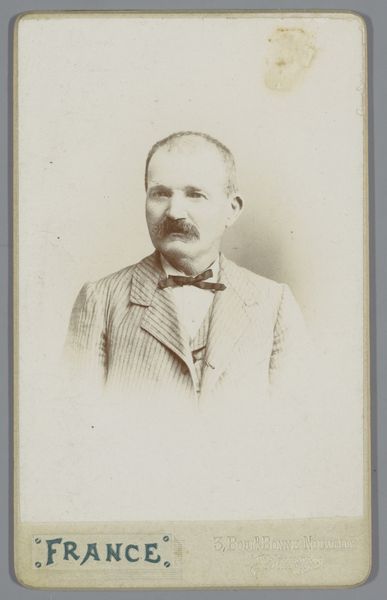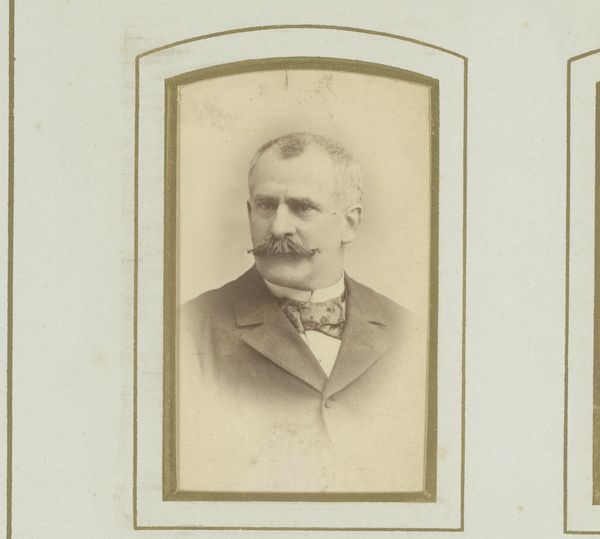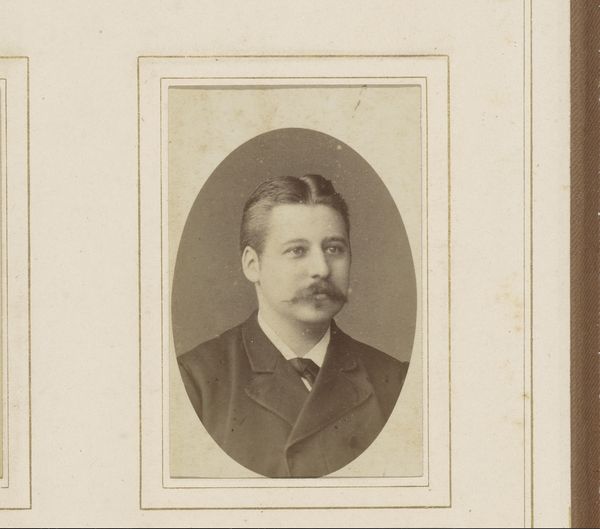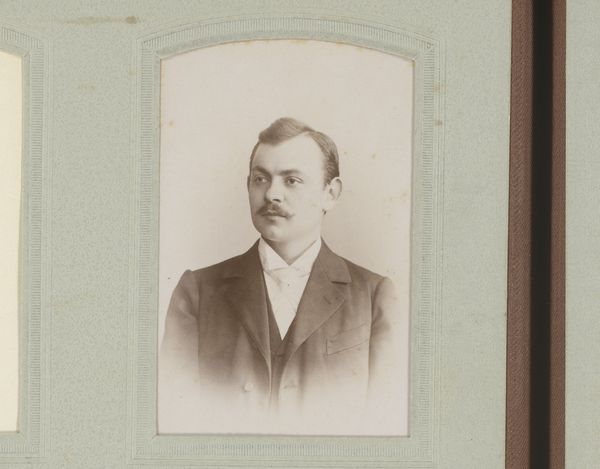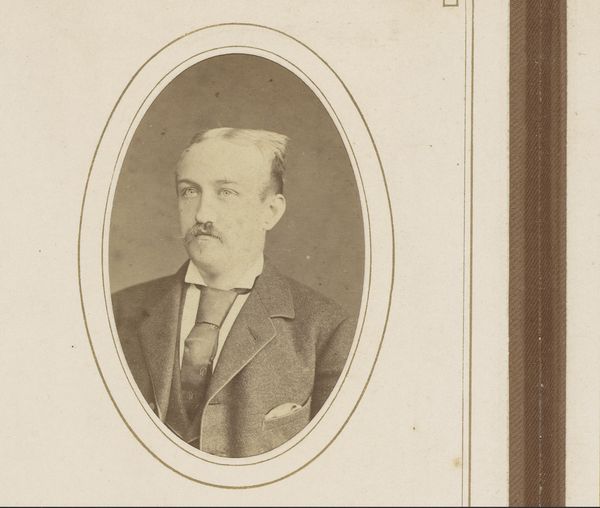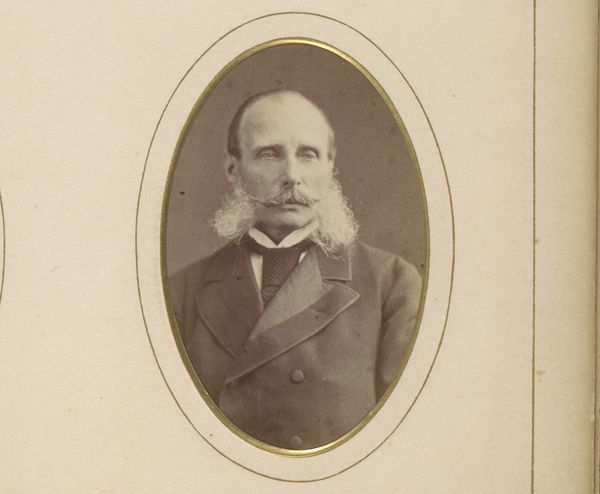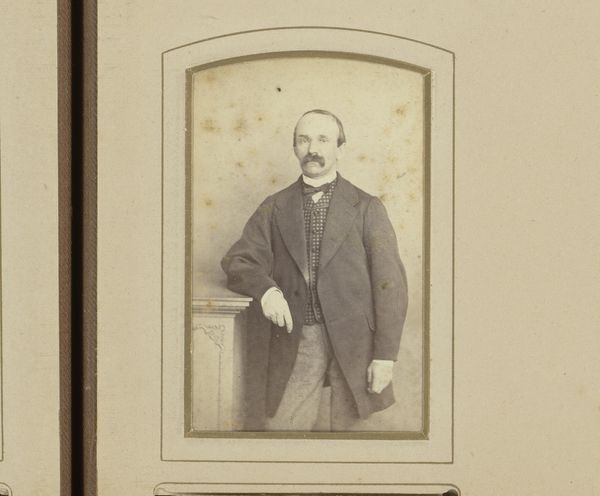
photography
#
photography
#
portrait art
#
realism
Dimensions: height 137 mm, width 98 mm
Copyright: Rijks Museum: Open Domain
Editor: Here we have "Portrait of a Man with a Moustache" by De Lavieter & Co., dating roughly between 1865 and 1903. It’s a sepia photograph, and what strikes me most is the…ordinariness of it. It feels like a very common image. What can you tell us about it? Curator: It's important to consider the mass production and consumption of photographic portraits in this era. Studios like De Lavieter & Co. industrialized portraiture. Think about the standardization of posing, lighting, even the backdrops – how did these affect the individual's representation and the overall value associated with the image itself? Was it art, or just a commodity? Editor: A commodity? Well, did the process itself – the chemicals, the paper, the darkroom labor – influence how these portraits were viewed and valued by society? Curator: Precisely! And think about who had access to this form of representation. Photography democratized portraiture to some extent, moving it beyond the wealthy elite who could commission painted portraits. But what about the working class? Could they afford this type of memento, this personal artifact of representation? Editor: That's fascinating. It’s easy to overlook the economics of image making, focusing on aesthetics alone. Curator: Exactly. Consider the materiality of this photograph: the paper stock, the developing process – were they trying to mimic the look and feel of painted portraits to appeal to a specific market? How does that affect our reading of the work today? Are we viewing an object of sentimentality, or something produced in a Victorian image factory? Editor: So it's less about the man in the photo, and more about how and why the photograph was created in the first place. I hadn't considered that! Curator: Exactly. By examining the material conditions, we can unpack its social and economic meanings. It reveals that even "realistic" portraiture is very carefully mediated by the labor of artists, artisans, and factory workers involved. Editor: This gives me a lot to think about regarding how art objects circulate in society.
Comments
No comments
Be the first to comment and join the conversation on the ultimate creative platform.
